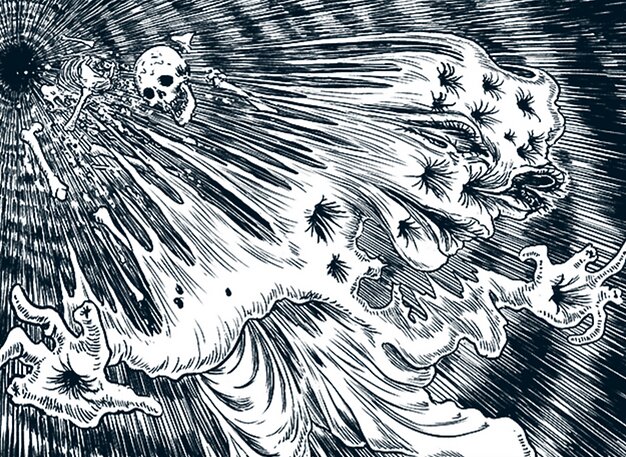How to Deal with Volatility in the Magic Card Market
Reprints, Unbans, and New Releases
It’s preview season!
So, with all this volatility in the market, what are we to do? Here are some case studies to help you navigate the treacherous swings of an excited market.
The Big Picture
First, a bit of context. Modern Magic card prices are primarily driven by two categories of factors: macroscopic forces (those which describe the broader economic environment, not just the card as an individual asset) and microscopic forces (those which are particular to the card). Examples of macroscopic forces include format health, economic strength, paper play demand, and much more. Taken together, these often describe the long-term picture for demand.
The slow drift upwards in
Microscopic forces, however, are often at their most pronounced in the short term, and include examples like card bannings, reprints, new-card synergies, etc. Don’t get me wrong, these can have significant implications in the long run, but this category is united in that these effects are visible at a much quicker rate than those of macroscopic forces.
Looking to
So, what does all of this have to do with volatility? Well, it provides us with a way of separating long-term behavior from short-term behavior. Let’s look at some examples.
Example One: Kappa Cannoneer
Kappa Cannoneer is the first of many MH3 previews which has the internet abuzz, and not without reason. This card was a powerhouse in Legacy not too long ago, and given Modern’s history with artifact-based strategies, there is plenty of speculation going around that Kappa Cannoneer could come in and reinvigorate a strong Affinity (or should I say Improvise) deck. The keyword in all of this, however, is speculation, something which is immediately visible in the price spike which Kappa Cannoneer is experiencing.
So, should we buy into the hype? Well, first let's zoom out and consider the macroscopic environment. Kappa Cannoneer is being introduced into Modern at a time when Wizards has begun a concerted push towards revitalizing paper play for 60-card formats. Commander is undoubtedly still the company’s darling, but Modern is far from being ignored - especially by players. This bodes well for Kappa Cannoneer’s potential to hold a strong price, as it’s entering an environment that would support the price of just about any Modern staple (until a reprint, that is).
However, when we look into the microscopic forces at play, the case for buying into Kappa Cannoneer just doesn’t seem as strong. Unlike the bevvy of new MH3 cards coming down the pipeline, Kappa Cannoneer is already available - this is, after all, a reprint. So, what we’re left with is a situation where a card is going to receive both new demand as well as significantly more supply. Cards like these tend to increase in price relative to their original printing, but often see a correction after their spike which is greater relative to completely new cards. So, while I don’t doubt that Kappa Cannoneer is going to be a bit more expensive than it was previously, I do doubt that its substantial gains are going to hold.
Example Two: Jace, the Mind Sculptor
Our next example is a card near and dear to my heart from back in my Legacy days: Jace, the Mind Sculptor. Unlike Kappa Cannoneer which is a reprint, Jace is an excellent example of what happens when a card’s demand skyrockets, but the supply stays the same - in this case, due to it becoming unbanned in Modern. So, let’s walk through what happened.
Before being unbanned, Jace had a price tag that was driven primarily by three things - scarcity, play demand, and price memory. The first two are pretty self explanatory: Jace had a standard set printing in
As for price memory, however, this is a bit more of a complicated phenomenon - in essence, Jace was expensive (around $60-$70) partially because people remembered it as being expensive. Having peaked at $140 a few years earlier, Jace continued to haunt the Magic zeitgeist as a powerful, expensive card. Then came the unbanning.
Almost overnight, without any play or new decks being built, Jace’s price tag doubled, reaching the old highs of $140. Unlike Kappa Cannoneer, a card which has been afforded the opportunity of being previewed and as such giving the player base time to theory-craft decks which could use it, Jace’s price spike was much more of a knee-jerk reaction. So, what happened? Well, it took a few weeks for people to figure it out, but ultimately Jace wasn’t as good in Modern as people were afraid it would be, and the card’s price retraced back to the mid-$80s. Yes, more than before the unban, but far from the highs.
This price swing is actually a lot more familiar than you might realize at first glance - it happens with every Standard cycle as a new set comes out and new format staples are discovered. Since Jace wasn’t receiving a reprint, the primary force at play in the price spike (and subsequent correction) was actually just good old-fashioned demand. No supply swing counterbalancing the fresh market appetite, just an expansion of who could theoretically want one. Yes, for new cards there is the increase in supply from zero (before being released) to some number post-release, but this increase in supply is only an illusion in retrospect; really, cards “start” with their initial-release supply, not the hypothetical zero that exists between preview and release. So, just as something like
Wrap Up
Between
We’re a while out from release, and plenty of testing can happen between preview season and when packs are first getting cracked.
Further Reading:

Harvey McGuinness is a student at Johns Hopkins University who has been playing Magic since the release of Return to Ravnica. After spending a few years in the Legacy arena bouncing between Miracles and other blue-white control shells, he now spends his time enjoying Magic through CEDH games and understanding the finance perspective. He also writes for the Commander's Herald.













